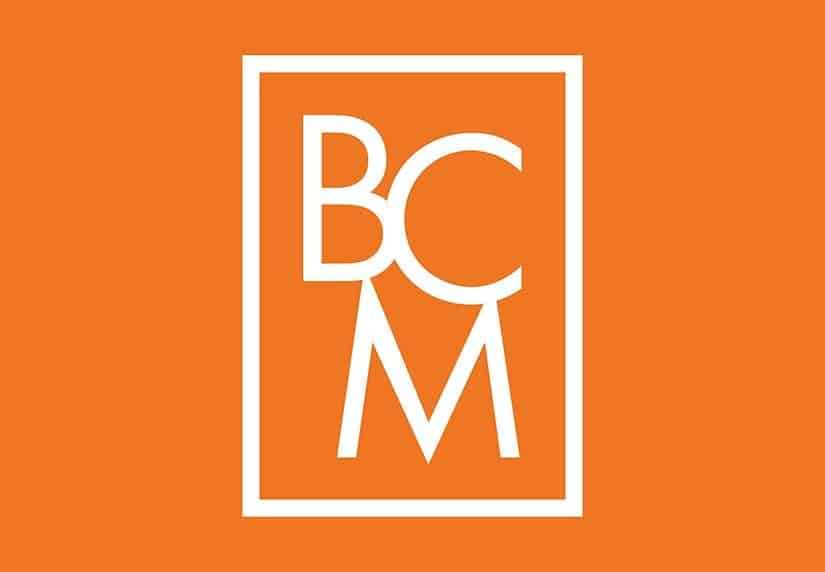BCM Featured in Business Insider App Store Marketing Report
As consumers become choosier about which apps they download and regularly spend time with, app store marketing has become even more difficult. A new...

 A shorter version of this article ran in Advertising Age.
A shorter version of this article ran in Advertising Age.
The “if you build it they will come” approach may have worked for Kevin Costner in Field of Dreams, but as most marketers have come to realize, this is a poor approach for marketing a mobile app.
So how do you get your app into the hands of your customers and prospective customers and ensure rapid adoption? We have found there is no one sure-fired way to ensure wide scale and successful app distribution, but through working with different clients of varying types and budget appetites, we have put together a “Top 10” list of things to ensure you include in your app marketing approach.
1. Plan Ahead. “By failing to prepare, you are preparing to fail.” So said Ben Franklin, and while I don’t believe he was referring to app marketing, he could have been. The biggest failure point we see is a failure to plan for the launch of the app with a robust, multi-channel communication effort.
When you plan your app build, you should also plan your app launch. Conduct an inventory of your existing customer touch points, do competitive analysis (how are your competitors positioned in the app stores), review paid media efforts to identify places where promoting the app may have little incremental cost, and organize your PR support for the launch. Your goal should be to develop a plan that will provide a big initial “bang” of support for the app once it has been accepted into the applicable app stores and drive a large number of downloads upon launch.
App store rankings are important to getting exposure for your app. In order to increase your chances of getting a higher ranking in the app stores, you will need a sustained rate of downloads. Coordinating your pre-launch plans to have all your assets working once the app is launched will help you achieve the flywheel effect of top app store rankings.
2. Use existing customer touch points as much as possible. If you have an existing customer base, now is the time to leverage it. Second only to app store discovery, people generally hear about apps from friends and family. Getting your app into the hands of your best customers is a good way to garner word of mouth support.
Existing customer touch points such as email, websites, social media sites, physical stores, billing statements, or other collateral can be easily enabled to promote the app. Think broadly here beyond the obvious. One of our most successful app marketing efforts was an execution we did for Marriott that used a QR code on the room key card to promote the app. Existing customer touch points can usually be enabled with a simple download link, SMS code, or QR code to encourage users to get your app. Before spending media dollars to reach people that may or may not be interested in your app, why not start with people already doing business with you?
Some simple examples are using a script on your website homepage to alert mobile browsers as to the availability of your app or including a call to action in your email footers. Both have low incremental costs and are extremely effective. Get creative here by doing a customer touch-point audit and identifying opportunities for promoting your app.
3. Think of the phone as a magic wand. One of the big misses we see in mobile marketing is that people get overly focused on the small phone screen itself and fail to see the phone for what it is – a magical device for interacting with and bridging the analog and digital worlds. QR codes, SMS codes, or simple-to-enter URLs can be added to all forms of existing communications from TV spots, to print ads, to in-store displays, and billboards.
The phone is the ultimate downtime device. Identify your customers’ behavior scenarios and then target real world elements that can be used to promote your app. Are you promoting a beer or spirits app? Putting a QR code on cocktail napkins or coasters with a direct link to your app is an effective way to get people to download it. Targeting travelers? Airports offer a plethora of environments where your target has ample down time and active interest in the category. You can even get guerilla by offering helpful check in tips for popular social media sites that promote the app.
4. Smart targeting. With mobile paid media, there are a number of things one can do to “be smarter” about how to promote the app. The number one thing is smarter targeting. By targeting we mean using the obvious – phone model, OS, country location, but also the less obvious. Think about the positioning of your app. Is it meant for a particular segment of the market like teens or millennials? What phone models or apps might be more popular with that segment? Can you target these? We aren’t saying don’t target other segments or media selects, but do organize your targeting such that you can analyze pre-identified segments that make sense to confirm or disprove your initial predictions.
In good, old-fashioned direct mail you would never mail a full list of men aged 50+ for a product targeted to women aged 18-25, so why do it here? You can go poor using algorithmic optimization solutions that confirm things you already know to be true.
For example, create a segment of users that are targeted only when they are on Wi-Fi and see how that impacts your performance. Many apps are on the larger side and coverage issues may impact a consumer’s decision to download an app. Consumers surfing on their high speed home or business networks might be more inclined to initiate a download than one ogling a single bar of 3G coverage. Easy to test, easy to prove or disprove.
Geo-fencing or location retargeting is a great way to use physical locations or visitation patterns to hone in on your target. Promoting a shopping app? Target malls locations and frequent retail visitors. Promoting a travel app? Airports, hotels, and rental car locations provide a high composition of frequent travelers and people that use their phones in these places often are probably good candidates for your app.
5. Be programmatic. Both iAds and Google are great sources of mobile inventory. But, if you are looking for additional scale or a way to drive down overall Cost per Download, you should look at the growing mobile DSP market to test multiple inventory sources and identify the best performing elements of each one. You will need a buying platform that supports tracking using more than cookies, since these are not supported widely on many mobile devices, and a single SDK that can provide you with a breakout out of:
Your existing DSP may provide this, but make sure they are plugged into all the unique mobile inventory sources that are available for mobile and their distinct ad types. Many desktop DSPs support limited mobile inventory but a specialist mobile DSP may have more integrations into better inventory sources beyond the obvious ones.
6. LTV, not CPD. Most efforts we see have a cost per download metric that is more or less pulled from thin air. Some rough guestimate of the value of the app install is calculated and is used across all inventory sources to set pricing. The issue with this approach is that over time, particularly for apps that have the opportunity to generate revenue or savings by their ongoing usage, certain sources of inventory provide better or worse return metrics in the long run.
A well-informed guesstimate is fine in the beginning stages when you may lack sufficient data to provide a more meaningful metric across inventory sources, but you should seek to move to a differentiated cost per app download metric based on the lifetime value of the source/user as quickly as possible. Is the user download you got via a free in airport Wi-Fi offer worth the same as the one you got via Facebook Install ads? Don’t know? You need to look at your tracking setup.
Sourcing the acquisition and tracking the usage or revenue generated over time will help you identify the best-performing sources. Hint: these may not the same ones generating the lowest cost per download.
At the same time, understand that we are in a period of intense competition for users in the app space. Due to device storage limitations and what we at Beeby Clark+Meyler call “applithy” – do you really need the 5th version of the price scanning app — now is a critical time to compete to get on the phone. Based on trends for mobile ad pricing and app download and usage, it is likely to get more expensive (and more difficult) to get users to consider your app. Think about this when calculating your LTV metric so you are not underachieving the opportunity.
7. Me, my friends, and I. Social channels provide a great opportunity to promote your app, with Facebook and Twitter both offering app install ads. Even before they offered these ads, we experimented with using QR codes as regular ad image thumbnails in Facebook ads and had some success getting people to scan them from their desktops. Retargeting your site visitors when they are on their mobile devices using Facebook and offering them your app is a great way to extend your reach.
Foursquare doesn’t offer app install ads, but they do offer the ability to create tips. And a tip can be a recommendation to get an app. Target locations that you believe may be in line with the value proposition of your app and promote it to people checking in or looking for tips.
Aside from app store discovery, a recommendation from friends and family is the next biggest way people find apps. Tap into your customer base and social channels to get your customers to help you promote your apps.
Does your app have a tell a friend feature or other features that promote the app when used (i.e. social integrations or other ways to share the app.
8. You scratch my app, I’ll scratch yours. For many businesses, partners are a great opportunity to promote an app. Are you an airline? Talk to your hotel and rental car partners about cross promotion opportunities. CPG company? Look to your retailers to see if there are in-store opportunities that you can take advantage of. Most businesses have complementary businesses that they share customers with. Identify these and think of creative ways that you can help each other out to promote your apps.
9. Definitely be an ASO. App Store Optimization or ASO is a new field or subset of search engine optimization. Companies like Distimo can provide you with important data related to improving your position within the app store. Like its distant cousin SEO, ASO is focused on making sure that the information surrounding your app is relevant and well structured so that the systems that drive app store rankings and search results can understand it.
In addition to simple mark-up issues, you will want to coordinate your launch to drive sustained downloads (see point 1). Download velocity is relevant to your rankings. It is estimated that you need sustained downloads of 2-3K per day to maintain high rankings. If your app is available in multiple countries, make sure you are taking advantage of submitting to the applicable app stores to ensure widespread distribution.
10. Wha’ d’ya think? Reviews are important because they impact app store rankings but also because, increasingly, these are being brought into search results where people may see them before they get to an app store. A bad rating here could kill you before they even get to your download page.
There are a number of app review sites. As part of your planning effort, you will want to identify app review sites that make sense for your category and do some outreach or submission.
These are some pretty good tactics that should be part of any app marketing plan. But, keep thinking about your audience and how (and where) they might be using your app and don’t be afraid to experiment to find innovative ways to promote it. The number of apps available continues to proliferate and if you are going to be noticed, you have to come up with something out of the ordinary in addition to the tactics outlined above.

As consumers become choosier about which apps they download and regularly spend time with, app store marketing has become even more difficult. A new...

Location might be the most important and differentiating aspect of mobile. When you think about it, it is what really differentiates mobile from...

In a two-part series, I’m diving a bit deeper to address how brands need to adapt to succeed in the mobile evolution, starting with user acquisition.